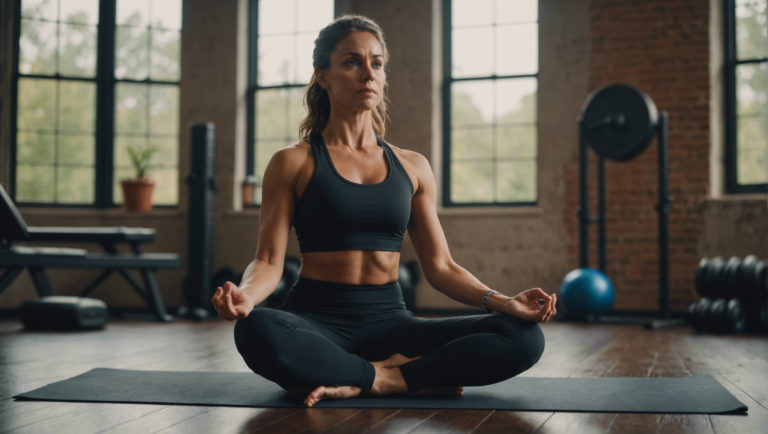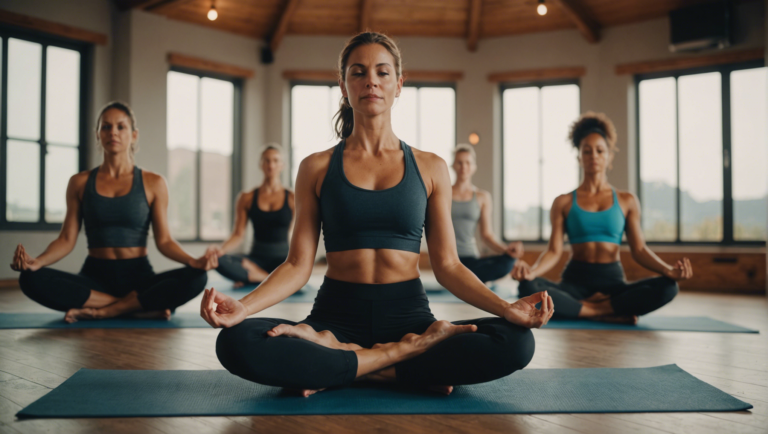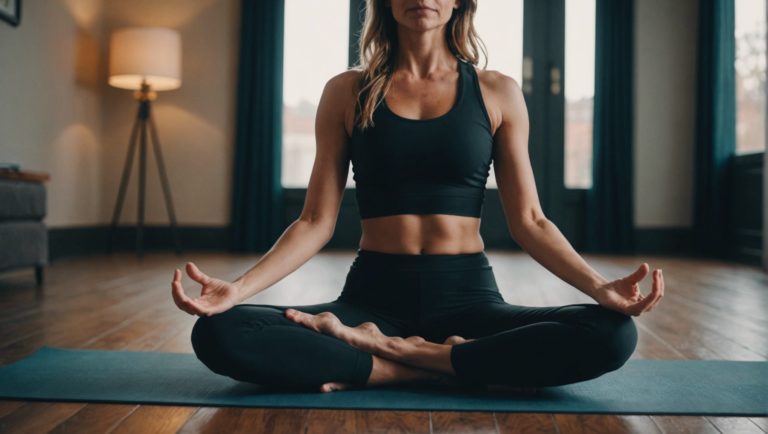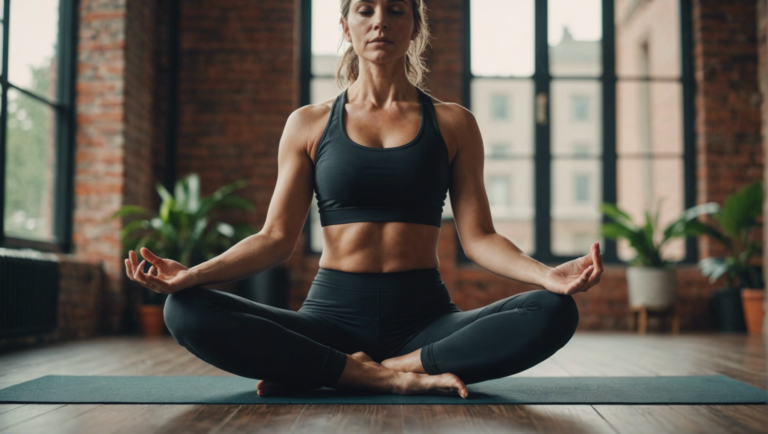Are Yoga Mats Waterproof? Unveiling The Truth
Unveiling the Truth: Are Yoga Mats Waterproof?
When you embark on the journey of physical and spiritual wellness that yoga promises, choosing the right gear is a foundational step. Amongst the plethora of yoga accessories available, the yoga mat stands out as an indispensable tool for practitioners of all levels. However, with the diversifying needs of yoga enthusiasts and the varying environments in which they practice, one question frequently arises: Are yoga mats designed to withstand contact with water? This exploration aims to shed light on this query, offering insights into the materials, design, and maintenance of yoga mats in relation to their water resistance.
Unveiling the Materials and Design
Yoga mats are crafted from a variety of materials, each offering distinct characteristics in terms of grip, comfort, durability, and yes, water resistance. Common materials include PVC (Polyvinyl Chloride), TPE (Thermoplastic Elastomer), natural rubber, and even cork. PVC mats are known for their durability and affordability but are not the most eco-friendly option. TPE mats offer a middle ground with moderate durability, better eco-friendliness, and some level of water resistance. Natural rubber mats provide excellent grip and eco-friendliness but can absorb water and sweat, making them less resistant to moisture. Cork mats, on the other hand, boast natural antimicrobial properties and a high degree of water resistance, thanks to cork’s innate ability to repel moisture.
Insights into Water Resistance
The question of whether yoga mats are waterproof can be nuanced. In essence, no yoga mat is entirely waterproof, meaning they cannot be submerged in water without absorbing some amount of moisture. However, many are water-resistant to a degree. This means that they can withstand sweat or light moisture without the liquid seeping into the mat’s core. Mats made from PVC and TPE are often more water-resistant, making them suitable for high-intensity yoga forms where sweat is inevitable. Conversely, mats made from natural materials like rubber or jute may absorb moisture, affecting their longevity and hygiene.
The Importance of Maintenance
Proper care and maintenance are pivotal in extending the life of a yoga mat, especially when it comes to managing moisture. Regardless of the material, keeping a yoga mat dry and clean ensures its durability and effectiveness. For water-resistant mats, a simple wipe down with a damp cloth and a mild detergent after practice can remove sweat and bacteria, preventing the mat from becoming slippery or degraded. For mats less resistant to water, more thorough drying and occasionally more intensive cleaning might be required to maintain their structure and grip.
Making the Right Choice
Selecting the right yoga mat goes beyond just evaluating water resistance. Consideration of one’s practice intensity, the type of yoga being practiced, personal environmental ethics, and the need for portability should guide the decision. For those practicing hot yoga or often find themselves sweating a lot, a water-resistant mat made from PVC or TPE might be ideal. Meanwhile, practitioners focused on sustainability might lean towards natural rubber or cork mats, despite the extra care required to manage moisture.
The Verdict
While no yoga mat can claim to be completely waterproof, many designs offer various levels of water resistance that can accommodate the needs of most practitioners. Understanding the inherent trade-offs associated with each material’s interaction with water will inform your purchase, ensuring that your yoga mat supports your practice in comfort, safety, and style. Remember, the longevity of a yoga mat not only depends on its material and construction but also on how well it is cared for. Proper maintenance tailored to the specific needs of your yoga mat’s material ensures that your journey towards wellness and tranquility is not just fruitful but also hygienic and sustainable.
The Material Science Behind Yoga Mats
The quest for the perfect yoga mat takes many enthusiasts on a journey through a wide array of options, each with its unique blend of materials and properties. At the heart of this quest is an understanding of the material science that underpins the design and functionality of yoga mats. This exploration not only illuminates the choices available but also highlights the innovative technologies and traditional materials that have been harnessed to enhance the yoga experience.
Unveiling the Core Materials
The evolution of yoga mats has seen a transition from the rudimentary cotton mats of yesteryear to the sophisticated designs of today, which employ a variety of materials to meet specific needs. The primary materials used in contemporary yoga mats include PVC (polyvinyl chloride), TPE (thermoplastic elastomer), natural rubber, and, increasingly, eco-friendly options like recycled rubber, jute, and organic cotton.
PVC mats are prized for their durability and slip resistance, making them a popular choice for many practitioners. However, concerns over PVC’s environmental impact have led to the rise of TPE mats, which offer a more eco-friendly alternative without compromising on performance. TPE mats are known for their lightweight composition, excellent cushioning, and recyclable nature.
Natural rubber mats, on the other hand, are celebrated for their grip and eco-conscious appeal. Extracted from rubber trees, these mats are biodegradable and offer a naturally slip-resistant surface, making them ideal for vigorous styles of yoga. Yet, for those with latex allergies, natural rubber mats may not be a suitable option.
Exploring Eco-Friendly Alternatives
In response to the growing demand for sustainable products, the yoga mat market has seen an influx of eco-friendly alternatives. Mats made from recycled rubber, jute, and organic cotton not only minimize environmental impact but also offer unique textures and levels of grip that appeal to different preferences. For example, jute mats incorporate fibrous materials that provide a natural, tactile feel, whereas organic cotton mats offer softness and absorbency, ideal for those practicing more restorative or meditative forms of yoga.
Innovative Technologies in Mat Production
The material science behind yoga mats is not static; it continually evolves with advancements in technology. One such innovation is the development of closed-cell technology in TPE and PVC mats, which prevents moisture and bacteria from penetrating the surface. This technology enhances hygiene and prolongs the lifespan of the mat, addressing common concerns among yoga practitioners.
Another significant advancement is the integration of alignment marks on the mat’s surface. These designs are not merely decorative; they serve as guides for proper hand and foot placement, fostering improved technique and alignment in practice.
The Importance of Mat Thickness and Texture
The choice of material significantly influences the thickness and texture of a yoga mat, which in turn affects comfort and stability. Thicker mats, typically made from foam or PVC, offer more cushioning and are favored by those with joint concerns or who practice mainly on hard surfaces. Conversely, thinner mats, such as those made from rubber or TPE, provide a firmer connection to the ground, preferred for balance-intensive practices.
Texture, dictated by the material’s inherent properties and the mat’s surface design, plays a crucial role in grip. A mat’s texture can range from smooth, which might provide less traction, to rugged, offering more grip for slippery hands and feet.
Making Informed Choices
Understanding the material science behind yoga mats empowers practitioners to make informed choices that align with their practice, ethical values, and environmental consciousness. As the market continues to innovate and expand, the emphasis on sustainable practices and materials becomes increasingly significant, shaping the future of yoga mat manufacturing and selection. Whether through the allure of eco-friendly materials, the pursuit of enhanced performance, or the need for specific functionalities like alignment aids, the science of yoga mat materials continues to evolve, offering a mat for every preference and practice.
How to Care for and Maintain Your Yoga Mat
Understanding the Importance of Yoga Mat Maintenance
Caring for and maintaining your yoga mat is not just about cleanliness; it’s about creating a hygienic, safe, and welcoming space for your practice. A well-maintained yoga mat can significantly enhance your yoga experience, providing a clean surface that supports your movements and guards against slipping. Regular maintenance ensures your mat’s longevity, saves you money in the long run, and keeps your practice environmentally friendly by reducing waste.
Steps for Effective Yoga Mat Care
Daily Cleaning Routine
After each use, it’s essential to wipe down your yoga mat to remove sweat, oils, and bacteria. A gentle spray made from water and a few drops of essential oil (lavender or tea tree for their antibacterial properties) can be a quick and effective daily cleaning solution. Spray lightly across the surface and wipe it down with a clean, dry cloth. This routine prevents the build-up of germs and odors, keeping your mat fresh and ready for your next session.
Deep Cleaning Process
A more thorough wash should be scheduled monthly or depending on the frequency of your practice and the intensity of your workouts. Submerge your mat in a bathtub filled with warm water and a small amount of mild, eco-friendly detergent. Gently scrub with a soft cloth, paying extra attention to areas that get a lot of contact. Rinse your mat thoroughly to ensure no soap residue remains, as this can make your mat slippery and hazardous.
Proper Drying Technique
After cleaning, avoid wringing out your mat since this can damage its structure and shape. Instead, lay it flat on a towel and roll them together to squeeze out excess moisture. Then, hang your mat in a well-ventilated area or outdoors, but keep it out of direct sunlight, as UV rays can degrade the mat material over time.
Storage Solutions
When your yoga mat is not in use, how you store it can affect its condition. Avoid folding your mat, as this can create creases and weaken its material. Rolling your mat with the top side facing out can prevent curling edges, making it easier to lay flat during your next use. Storing your mat in a cool, dry place prevents the growth of mold and mildew.
Spot Cleaning Techniques
For minor spills or stains, spot cleaning is a quick fix. Using a cloth dipped in a soap and water solution, gently dab at the stain. Avoid harsh scrubbing, which can damage the mat’s surface. For tougher stains, a small amount of baking soda mixed with water can serve as an effective, natural abrasive.
Nurturing a Long-Lasting Relationship with Your Yoga Mat
Your yoga mat is more than just a piece of equipment; it’s an integral part of your practice and well-being. By adhering to these maintenance steps, you’re not only caring for your mat but also for your physical and mental space. A clean, well-maintained mat invites positive energy and focus, enhancing your yoga experience. Remember, the attention you give to your mat reflects the attention you give to your practice. Treating your mat with care and respect extends its life, supports your practice, and fosters a deeper connection to your yoga journey.
The Best Yoga Mats for Outdoor Practices
Yoga has seamlessly woven itself into the tapestry of wellness routines for individuals across the globe. Its adaptability to indoor and outdoor settings accentuates its universal accessibility. When discussing yoga in the embrace of nature, the importance of having a suitable yoga mat that withstands the elements and enhances practice cannot be overstated. This discourse will guide you through selecting the optimal yoga mat for outdoor settings, ensuring durability, comfort, and harmony with your surroundings.
Choosing the Right Material
The fabric of your yoga mat plays a pivotal role in its efficacy for outdoor use. Traditional PVC mats may offer durability, but they lack eco-friendliness and can become slippery when wet. On the other hand, natural rubber mats, although more environmentally congenial, may degrade quickly under direct sunlight. TPE (Thermoplastic Elastomer) mats strike a balance, offering both eco-friendliness and UV resistance, making them ideal for outdoor sessions.
Thickness and Cushioning
When engaging in yoga amidst the rugged or uneven terrains of nature, the thickness of your mat becomes a critical factor. A mat that is too thin may not provide sufficient cushioning against hard surfaces, while a mat that is too thick can impair stability during balance poses. A thickness around 5mm is generally considered optimal, offering a harmonious balance between comfort and stability.
Texture for Traction and Stability
The outdoor environment introduces variables like dew, dust, and uneven terrain, which can impact your grip and stability. A mat with a textured surface enhances traction, reducing the risk of slipping and aiding in maintaining poses even in the most challenging conditions. Look for mats designed with raised patterns or made with non-slip materials to ensure a steadfast practice.
Portability for the Travelling Yogi
For those who wish to carry their practice to remote outdoor locales, the weight and portability of the mat are paramount. Heavy and bulky mats can be cumbersome to transport, detracting from the overall experience. Lightweight mats that come with carrying straps or can easily fit into a backpack are preferable for the nomadic yogi. Additionally, some mats are designed to be foldable rather than rolled, further enhancing their portability.
Durability Against the Elements
Exposure to the sun, wind, and moisture can rapidly deteriorate a mat not designed for outdoor use. When selecting your mat, ensure it is crafted from materials that are UV-resistant and waterproof or at least water-resistant. These features will prolong the life of your mat, ensuring it remains a companion in your wellness journey across countless sunrises and sunsets.
Eco-Friendly Choices
Yoga, in its essence, is a practice that promotes harmony between the body, mind, and surrounding environment. Selecting a mat that is biodegradable or made from recycled or natural materials not only benefits the practitioner but also the planet. Eco-friendly mats often come from materials such as natural rubber, jute, and organic cotton, offering an ethical choice without compromising on performance.
Aesthetic Synergy with Nature
While function takes precedence in the selection of an outdoor yoga mat, aesthetics also play a role in enhancing your yoga experience. Choosing a mat with colors and patterns that resonate with your personal style and the natural setting can create a more immersive and harmonious practice. Whether you’re drawn to earth tones that blend with the landscape or vibrant hues that stand out, the visual appeal of your mat can elevate your outdoor yoga session.
Selecting the best yoga mat for outdoor practices involves a careful consideration of material, thickness, texture, portability, durability, eco-friendliness, and aesthetics. By prioritizing these factors, yogis can find a mat that not only meets their functional needs but also reflects their personal style and environmental values. The perfect yoga mat becomes more than just a foundation for practice; it becomes an extension of the yogi’s connection with nature, enhancing the profound experience of outdoor yoga.
Innovations in Yoga Mat Technology and Sustainability
As the world leans more towards sustainability and innovative technologies, the yoga community is not left behind. The evolution of yoga mat technology and its strides towards environmental friendliness are commendable developments that reflect broader consumer trends towards health and sustainability. This article will delve into the latest advancements in the realm of yoga mats, focusing on the notable shift towards eco-friendliness and the cutting-edge technologies that are shaping this space.
Advancements in Eco-Friendly Materials
The shift towards sustainable living has prompted yoga mat manufacturers to explore eco-friendly materials. Traditional yoga mats were often made from PVC (polyvinyl chloride), which has been criticized for its environmental impact, including its non-biodegradability and the toxic chemicals released during its manufacture and disposal. Today, a significant transformation is underway, with materials such as natural rubber, jute, organic cotton, and even recycled plastics gaining popularity. These materials not only reduce environmental footprints but also offer the added advantage of being biodegradable and, in some cases, recyclable.
Natural rubber, harvested sustainably from rubber trees, has emerged as a popular choice for eco-conscious yogis. When compared to PVC, natural rubber offers superior grip and comfort, making it an excellent material for yoga mats. Moreover, the use of organic cotton and jute in yoga mats speaks volumes about the industry’s commitment to sustainability. These materials are not only sustainable but also provide a textured surface that enhances grip, which is particularly beneficial for practices requiring more traction.
Breakthroughs in Durability and Performance
With the introduction of new materials, there has been a noticeable improvement in the durability and performance of yoga mats. The integration of non-slip surfaces, improved cushioning, and enhanced durability are among the key features that manufacturers are focusing on. Innovations in material engineering have led to yoga mats that can withstand intense yoga sessions without wearing out, ensuring that they remain functional for longer periods. This emphasis on durability not only extends the lifespan of yoga mats but also reduces the frequency of replacement, further contributing to environmental conservation.
Antimicrobial and Easy-to-Clean Surfaces
One of the latest innovations in yoga mat technology is the development of antimicrobial surfaces. Considering the nature of yoga practices, mats can become breeding grounds for bacteria and fungi. Therefore, manufacturers are now producing yoga mats with antimicrobial properties, preventing the growth of harmful microorganisms. This feature not only ensures the hygiene of the yoga mat but also contributes to its longevity.
Additionally, the ease of cleaning has become a significant consideration for yoga practitioners. Modern yoga mats are designed to be low maintenance, with surfaces that are easy to wipe clean. This convenience factor, combined with the health benefits of antimicrobial properties, significantly enhances the appeal of these cutting-edge yoga mats.
Focus on Portability and Design
The modern yogi is often on the move, and the need for portable yoga mats has never been more pressing. Recent innovations have led to the creation of lightweight and foldable yoga mats that are easy to transport. This portability does not come at the expense of performance, with these mats retaining the essential qualities required for a rigorous yoga session.
Furthermore, there has been a notable trend towards aesthetically pleasing designs. Yoga mats are now available in a myriad of colors, patterns, and textures, catering to the individual preferences of yogis. This alignment of form and function underscores the holistic approach to innovations in yoga mat technology.
The advancements in yoga mat technology and sustainability are a testament to the industry’s alignment with global trends towards environmental preservation and technological innovation. The use of eco-friendly materials, along with improvements in durability, antimicrobial properties, and the emphasis on portability and design, are setting new standards in the yoga mat market. These developments not only enhance the yoga practice but also contribute to a healthier planet, reflecting a mindful approach that is at the heart of the yoga philosophy.
Conclusion
Embarking on a journey through the dynamic world of yoga practice unveils a multitude of considerations, chief among them the quintessential tool of the trade: the yoga mat. The exploration into whether yoga mats are waterproof or not has opened a deeper dialogue about the material essence of these indispensable accessories, how we can extend their lifeline through proper care and maintenance, and the suitability of various mats for the great outdoors. Moreover, the advancements in yoga mat technology, with a keen eye on sustainability, introduce an innovative chapter in the evolution of yoga practice that embraces both eco-consciousness and performance.
Diving into the truth about the waterproof nature of yoga mats reveals a complex answer; it is not a straightforward yes or no proposition. The material science behind yoga mats plays a pivotal role, as they are crafted from a diverse assortment of substances, ranging from natural rubber and jute to PVC and TPE. Each of these materials boasts its own set of properties in relation to water resistance, affecting the mat’s performance and longevity when exposed to moisture. Understanding these differences is crucial for yogis who frequently practice in varied settings, including those who embrace the serenity of outdoor sessions where the elements become an integral part of the practice.
The longevity and performance of yoga mats are greatly influenced by regular care and maintenance, a responsibility that falls upon each practitioner. This includes knowing how to properly clean and store mats, especially in relation to their exposure to water and moisture. Mats that are not inherently waterproof or water-resistant require more diligent care to prevent the degradation of materials or the proliferation of bacteria and odors. Through adopting effective cleaning routines, practitioners can significantly extend the lifespan of their yoga mats, ensuring that they remain a staple in their practice for as long as possible.
For those whose practice transcends the confines of indoor spaces, exploring the best yoga mats for outdoor practices is essential. The demand for mats that can withstand the unpredictability of outdoor elements without compromising on grip, comfort, or ecological impact has led to the development of specific mats designed for such conditions. These mats often boast enhanced durability, water resistance, and eco-friendly materials, catering to the adventurous spirit of outdoor yogis while respecting the natural environments that serve as their backdrop.
The forefront of yoga mat innovation is marked by a harmonious blend of technological advancement and a resurgence of sustainability. As manufacturers strive to meet the evolving needs of the yoga community, there is a tangible shift towards materials and production methods that reduce environmental footprint without sacrificing quality or performance. This commitment to sustainability not only reflects the ethical considerations of modern practitioners but also ensures that the pursuit of physical and spiritual wellness is in alignment with the preservation of our planet.
The journey through the intricacies of yoga mats—from their relationship with water to the sustainable innovations shaping their future—reveals a multifaceted narrative that goes beyond simple equipment selection. It highlights a collective movement towards mindful practice, characterized by an informed choice of materials, a dedication to care and longevity, and a profound respect for the environment. This exploration not only equips practitioners with the knowledge needed to choose the right yoga mat but also deepens their connection to the practice, embodying the principles of mindfulness, sustainability, and wellness that yoga itself seeks to promote.



